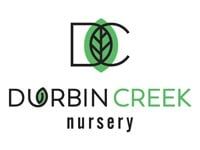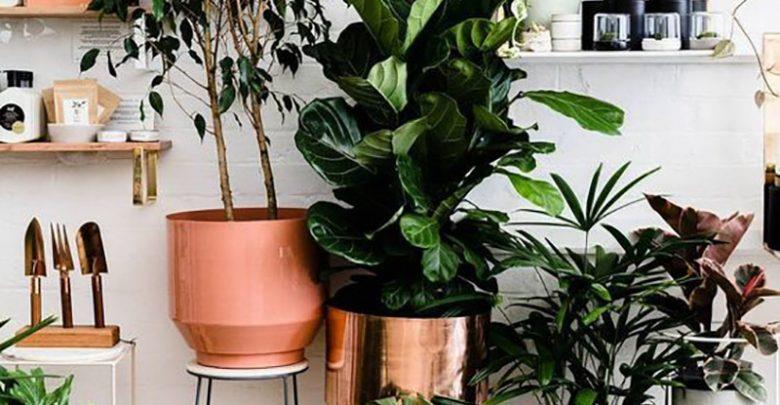"YOUR NEIGHBORHOOD SOD AND MULCH CENTER"

Blog Layout
Durbin Creek September 2019 Newsletter
Admin • September 27, 2019
SEPTEMBER 2019
Houseplants have a way of brightening up any space. They bring some of the natural world inside, and they're a classic addition to any decor.
More and more, people wish to create relaxing spaces with oxygen-rich houseplants inside their homes. Besides adding warmth and texture, houseplants improve air quality by scrubbing it clean. Houseplants have been scientifically proven to reduce stress and increase productivity.
If you're going to incorporate houseplants into your home, think big. Plants are no longer being used as merely decorative accents. In many of today's modern designs, plants are taking center stage. Consider a large display featuring multiple plants, and don't shy away from growing wider or taller plants while you're at it. Lots of leaves and big plants are in, so don't be afraid to experiment with some bold, eye-catching plant decorating ideas.
When it comes to placing plants in your home, start thinking outside the box. Natural beauty can add a lot to your home.
To get the look, start with tough houseplants such as ZZ, pothos, aglaonema, dracaena, rubber tree
and snake plants.
Even if you’re a brown thumb or you travel regularly, you can’t go wrong with these. By being a plant parent, it’s surely going to lift your mood
and brighten your home.
Be sure to check out our new selection of houseplants and succulents! We even have the perfect houseplant pottery to got with them!
September
What to Plant:
Annuals/Bedding plants: Try ageratum, celosia, zinnia, and wax begonia for color into fall.
Bulbs:
Add color, texture, and pattern to the garden with the many varieties of elephant’s ear.
Herbs:
Plant Mexican tarragon, mint, rosemary, and basil.
Vegetables:
It is time to establish strawberry plants. Other veggies to plant now are broccoli, carrot, cabbage, collards, and many others.
What to Do:
Lawn insects: Continue to monitor the lawn for signs of insect damage. Fall armyworms, chinch bugs, mole crickets, and sod webworms are still active this month.
Lawn insects: Continue to monitor the lawn for signs of insect damage. Fall armyworms, chinch bugs, mole crickets, and sod webworms are still active this month.
Perennials and bulbs:
Divide and replant those that have grown too large or need rejuvenation. Add organic matter to new planting areas and monitor water needs during establishment.
Lawns:
The last fertilizer application should be around the middle or end of September in north Florida. Choose a fertilizer with no or very little phosphorus unless a soil test indicates a need for it. A fertilizer containing controlled-release nitrogen yields longer-lasting results.
Lawn weeds:
Maintain healthy grass because it is the best defense against weeds. Avoid "weed and feed" products; only apply herbicides to areas with weed infestations.
Garden for hummingbirds:
Plant firebush, firespike, russelia, and other plants to supply nectar for visiting hummingbirds.
Vegetable garden:
Prepare the fall vegetable garden if not done in August. Using transplants from your local garden center will get the garden off to a fast start, but seeds offer more varieties to choose from. For a list of Florida-proven performers,
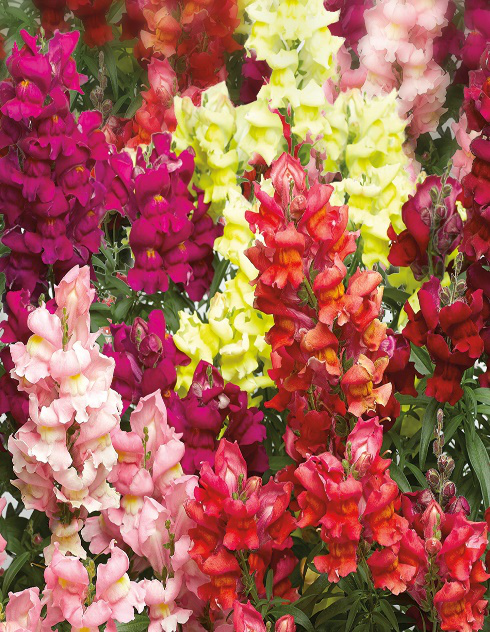
October 24, 2019
Its finally fall!!! Gorgeous sunny days and cool nights can bring with them some of the biggest color for the year. Here at the nursery we are enjoying Snapdragons, Supertunias, Snow Princess and so much more. But its not just flowers that are showy right now. There are some wonderful evergreens getting ready to do what they do best and they are showstoppers! Of course Camellias are beginning to burst into color while the rest of the garden is going to sleep. The glossy leafed evergreens create a gorgeous floral display from winter until early spring. Tea Olive are going into bloom which means intoxicating fragrance will fill the air in your yard. It is also a tall, graceful, broadleaf evergreen. These plants do well in containers and even better in yards. For containers try pairing with Pansies, Dusty Miller and Snow Princess for color all season long. Cutting back on irrigation time or frequency is also necessary as e come into the cooler temperatures. Watering on a limited cycle or only as needed with benefit your garden and lawn. Plants use far less water in the winter months. Amaryllis, Crinum and Spider Lilies will still produce foliage in the cool season. Amaryllis will also produce blooms in many different shades of red, pink and white. Since temps are cooling down, it’s a great time to apply Dormant Horticultural Oil to help control scale. Follow us on Facebook to find out about our November specials!
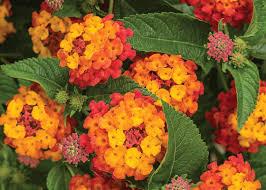
By Admin
•
September 27, 2019
While the top trend in gardening is, well, more gardening. Consumer research has identified a growing segment of “Do It for Me” homeowners who want the beauty and seasonal rhythm of a landscaped space, but don’t have the time to make this happen. That’s where a place like Durbin Creek Nursery comes into play! Whether you’re a gardening novice or a pro, we all need help on occasion. Our associates keep up on gardening trends while keeping in mind the plants that thrive in our planting zone (9a). We’re huge fans of container gardens - Big impact on a small scale. But we also offer landscaping services. All your questions can be answered right here on site. Not everyone is a “gardener,” but many are finding that a beautiful garden installed by someone is worth every dime. And no matter how they get made, the world is a better place with more gardens. We love to serve our community and as a thank you to our dedicated customers we’ll be hosting our Annual Customer Appreciation day on October 5th. It will be a day of food, fun and fabulous savings (as well as some giveaways). Be sure to stop with any of your gardening questions any day! What to Plant Annuals/Perennials plants: The hottest days of summer limit planting now to heat-tolerant vinca, gaillardia, bulbine, lantana, Blue My Mind, coleus and of course, Penta. Fertilize as needed. Heavy rains can leach nutrients out of our soil. Herbs/Vegetables: Herbs that can be planted from starter plants include bay laurel, ginger, Mexican tarragon, and rosemary. Cool-season crops can be started now as well as warm-season vegetables such as lima beans, cucumbers, eggplant, and peppers. Tomatoes can also be planted for the fall garden. Our Vegetable and Garden soil is on special all month BOGO! What to Do Palms: Check older palm fronds for yellowing as it may indicate a magnesium or potassium deficiency. Apply an appropriate palm fertilizer, we recommend Fertilome Palm Food with micro nutrients.
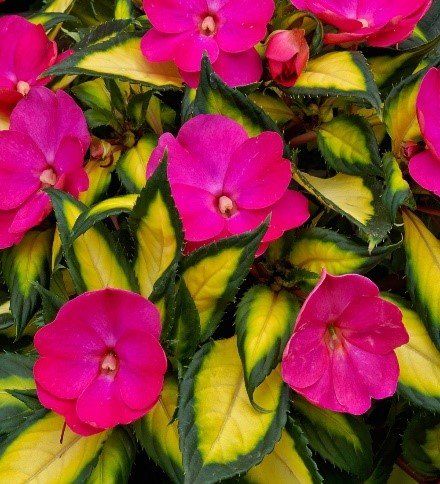
By Admin
•
September 27, 2019
OCTOBER 2019 Do you ever wonder what to grow in the southern fall garden? Some people think that fall is the time to clean up the garden before winter begins. Of course my favorite thing about fall is that all those beautiful colors are back in the Nursery!! Supertunias in every shade, sweet smelling mums and alyssum, red fountain grass, dianthus and so much more! The cooler temperatures bring in the best plants! Plants that thrive in cooler temperatures are the best choice for the fall garden. Trees bursting with fall colors are enhanced by beautiful blooms and unique foliage of fall shrubs and perennials. Often shrubs that bloom abundantly in the spring or summer will also re-bloom in the fall. Even those that don't bloom a second time often provide a stunning display of fall colored foliage to brighten your landscape. For example: Azalea - This shrub prefers cool, partially shaded spots in your yard. Some varieties will bloom in the spring and then re-bloom in the fall. Hydrangea - A gorgeous fall show is sure to draw attention from passers-by when you have fall blooming hydrangeas in shades of white, pink and blue. Mums - Plant this flower in full sun and enjoy a variety of colors from late summer well into fall. Supertunias – petunias…only better! Fountains of color in every shade. Most varieties will bloom straight through winter into early summer. Try these cool weather annuals to replace your tired summer flowers in either beds or containers - angelonia, Begonia, coleus, lantana, cosmos, impatiens, lobelia, marigold, petunia, sweet alyssum, and zinnia. Plant fall veggies like Lettuce, Snowpeas, Collards, Carrots, Brussel sprouts, spinach, Broccoli, radish. The general rule of thumb is to plant fall vegetables 90 days before the first frost. Although, some vegetables (like broccoli) need a little more time to mature and sprout. Trees and Shrubs - Planting now gives them time to grow roots and take a strong hold into the ground. Be sure to stop in for all your fall needs and don’t miss our Annual Customer Appreciation Day on October 5th! We’ll have food, raffles, games and local vendors here for you to enjoy…you can even win a gorgeous planter filled with your choice of flowers up to a $500 value!!
Browse Our Website
Business Hours
- Mon - Fri
- -
- Sat - Sun
- Closed
Contact Information
OUR LOCATION
Address: 4286 Race Track Road, Saint Johns, FL 32259Tel:
904-429-7297
Email:
Jason@durbincreeknursery.com






Contact Information
OUR LOCATION
Address: 4286 Race Track Road, Saint Johns, FL 32259Tel:
904-429-7297
Email:
admin@durbincreeknursery.com
Business Hours
- Mon - Fri
- -
- Sat - Sun
- Closed






Content, including images, displayed on this website is protected by copyright laws. Downloading, republication, retransmission or reproduction of content on this website is strictly prohibited. Terms of Use
| Privacy Policy
